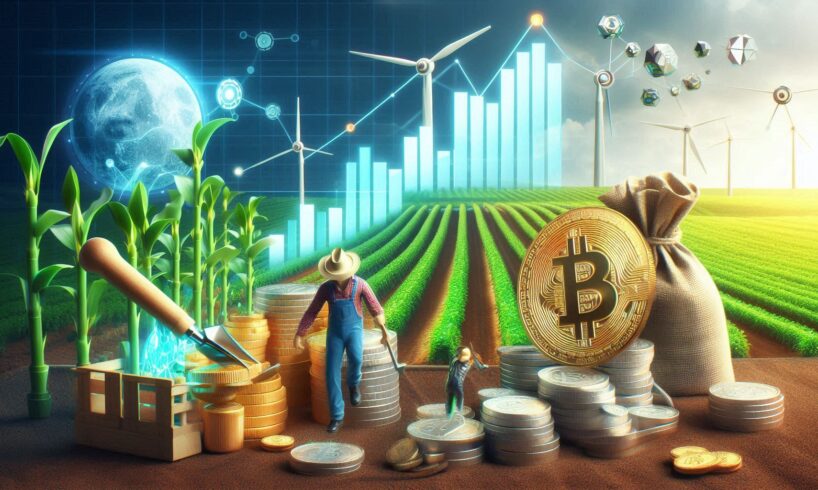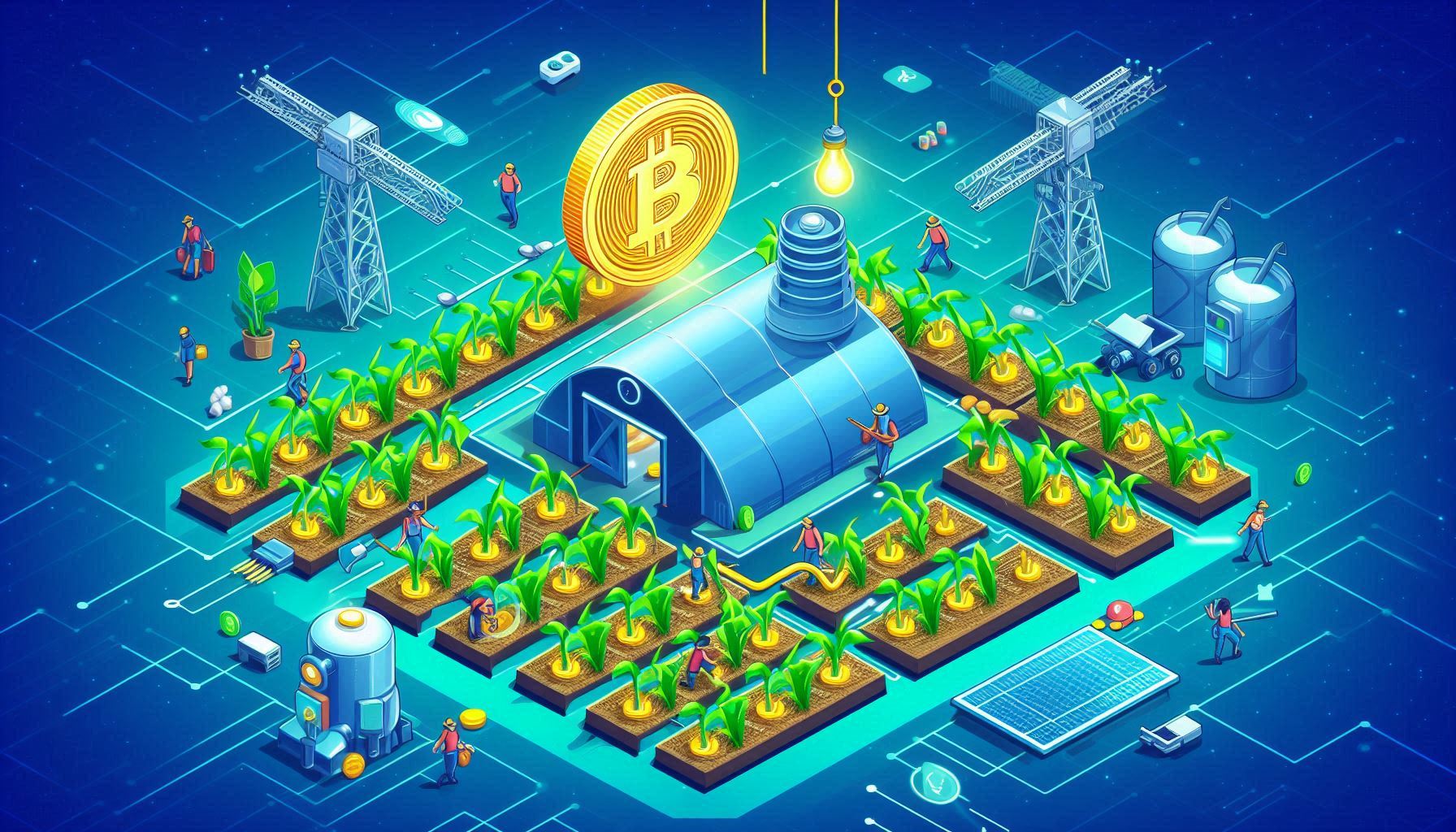
Cryptocurrency yield farming is often referred to as liquidity mining. It has officially found its position among other maximal yields yet with maximum risk in the world of decentralized finance. Yield farming refers to a type of lending or amassing of cryptocurrency assets for profits, mostly through extra tokens. Indeed, the pay potential is vast, but the risks are equally great, so it is very important that the mechanics, pros and cons be known before participating.
This article will give us both sides of yield farming: the good and the bad that are amassed as part of the increasingly financial practice that it has become.
What is Crypto Yield Farming?
Yield farming enables cryptocurrency holders to earn money from their assets through providing liquidity to DEXs or lending platforms. Those then utilise the funds supplied to execute any trades, loans, or other financial activities. In turn, participants earn fees or percentages of newly minted tokens, usually for the platform or protocol.
For example, a liquidity provider provides liquidity to the trading pair, like ETH/USDC on a DEX such as Uniswap or PancakeSwap. As traders exchange between these two tokens, the liquidity providers receive a share of the trading fees. Apart from this, rewards are received in the form of tokens. These rewards increase returns to great degrees sometimes in double-digit and even triple-digit annual percentage yields, APY.
Also Read: Cryptocurrency Regulations by Country: A Global Overview of Digital Asset Policies
Rewards of yield farming

-
High Returns
The main appeal of production farming is the unimaginable potential for profits. Where annual returns on investment in conventional finance range between 5% to 15%, yield farming sometimes promises APYs of 100% or more than 1,000%. This particularly occurs when launching a new protocol or token, with big incentives on offer for early adopters.
-
Passive Income
Yield farming is a means through which people holding any amount of cryptocurrencies can earn income passively without selling the specific assets. Tokens do not lie dormant in the wallet; rather, the wallet is used by depositing them into a liquidity pool or lending platform, hence giving users the chance to earn rewards on their assets while holding full ownership of them.
-
Compound Rewards
In most successful farming operations, users can compound their earnings by reinvesting their rewards into the same or other liquidity pools. This compounding means farmers can grow their holdings over time rapidly enough, provided they are consistent in reinvesting their earnings.
-
Access to New Tokens
Most of the time, yield farming provides investors with early access to new tokens issued by new DeFi projects. These tokens are renumerated as rewards for conducting liquidity pool or lending market activities. For the more prudent investor, this represents a means of “getting in early” on what might become a successful project before it is a widely traded or even listed token.
-
Decentralization and control
Yield farming is decentralized in a financial space. This requires the eradication of intermediaries like banks or brokers. It functions in a system whereby individuals have full control over their assets. This implies that the individual does not necessarily need to trust a central entity. One of the attractions of a decentralized structure for many crypto enthusiasts is an affinity for autonomy over financial assets.
Risks of production farming
While the rewards on offer are staggering, yield farming is a highly risky activity. Indeed, it is precisely these features that attract it that also make it very volatile and uncertain.
-
Non-permanent damage
The most misunderstood risk in yield farming relates to permanent damage, which occurs when the value of the tokens used as liquidity changes relative to each other. For example, say you are lending into the ETH/USDC pair and the price of ETH just skyrockets. The ETH that you’ve built up in the pool may now be “worth” less than if you had just held it. The “non-permanent” loss becomes permanent if you decide to withdraw your assets from the pool before prices are corrected to their ratio.
Although the liquidity providers receive fees and rewards for taking on this risk. This may not always be adequate to defray the unsustainable loss, especially in highly volatile markets.
-
Weaknesses of Smart Contracts
The production farming strategies are powered by the smart contracts-the self-executing code running on blockchain networks-and the funds disbursals and prize distributions are governed by these agreements. Still, smart contracts are not immune to bugs or vulnerabilities, and poorly written or audited contracts can cause massive losses to participants.
Hackers have taken advantage of weaknesses in smart contracts. Meaning they withdraw liquidity pool funds and thereby incur huge financial losses on the farmers. Even high-scale protocols are not left out; therefore, there is a need for strong audits and diligence before engaging with any fruitful farming activity.
-
Volatility in the market
Cryptocurrencies can be very price-volatile, and yield farming does not serve to reduce the risks. A downward trend in the market can hit you hard with large losses if your mined tokens plummet rapidly in price. For example, a newly farmed token that drops by 50% within a few days can mean that all your higher APY rewards are worth almost nothing.
-
Platform and Token Risk
In general, the area of fruitful farming remains mostly new and untested DeFi projects. Some of the projects will certainly be successful, others will fail, and some are just scams. A token issued for a reward might turn out to be worthless if the project is a dud. Worst cases include the so-called “pulling of the rug” by liquidity being pulled from the pool and the founders running away with the funds, leaving participants with nothing.
More importantly, there is an absolute need to trust the stability and security of the underlying platform or DEX. In case the platform were to suffer security breaches or bankruptcy, productive farmers may lose their staked assets.
-
Gas Fees and Transaction Costs
On some networks, most significantly on Ethereum, transaction prices in the form of gas fees are rather steep. With production farming, one needs to make multiple transactions-for collecting tokens for harvesting rewards and reinvesting those rewards. At high levels of network congestion, gas will eat up a large portion of what you’ve earned as rewards making it not very rewarding for participants with smaller portfolios.
Low-cost alternatives, such as BSC or other Layer 2 solutions, will be more popular given reduced transaction fees. These alternatives, however, come with their trade-offs in regard to security and decentralization.
-
Regulatory Uncertainty
De-Fi and production farming are in the gray area of regulation. Governments around the world are yet to finally determine their stance on cryptocurrencies and decentralized finance. Regulatory action, especially exchanges and DFI platforms, would immediately impact yield farming profitability and viability. Changes in tax law, amendments in safety regulations, or straight bans on specific activities generally have an effect that diminishes produce farming attraction, especially from participants in countries that enforce strict financial regulations.
How to minimize risks in produce farming.

The most important aspect in risk minimization while producing is to be more careful and informative. Here are some strategies;
Diversification: Spread your asset across different platforms and liquidity pools and do not overexpose oneself to a single project or asset.
Smart contract audits. Do not venture into projects with good audits of their smart contracts. Be wary of new projects, especially those that haven’t been vetted by reputable third-party auditors.
Keep an eye on the market: Maintain awareness of what is happening in the market. Like how a particular project is progressing or potential regulatory changes. This enables you to be proactive and catch up quickly with unstable situations.
Test small: Test a new protocol or strategy on a tiny amount of winter. This lets you learn the mechanism behind yield farming while minimizing the upside-downside risk.
Also Read: Freedom at Midnight: A Captivating Look at India’s Struggle for Independence
Outcome
There is a great potential in the crypto space with yield farming. High reward with passive income-but not at all risk-free. There are irregular losses, vulnerabilities in terms of smart contracts, market volatility, and then there is regulatory issues. But if someone understands them and takes measures to avoid it, then farming becomes pretty straightforward.
Yield farming is a thrilling and potentially lucrative means for those willing to accept the risks and rewards that come with the constantly changing cryptocurrency environment. With any investment strategy that comes with such potential but also with such high risk. One must carefully research important information, use money you can afford to lose to possibly earn, and be prepared to walk away when it no longer makes sense.







